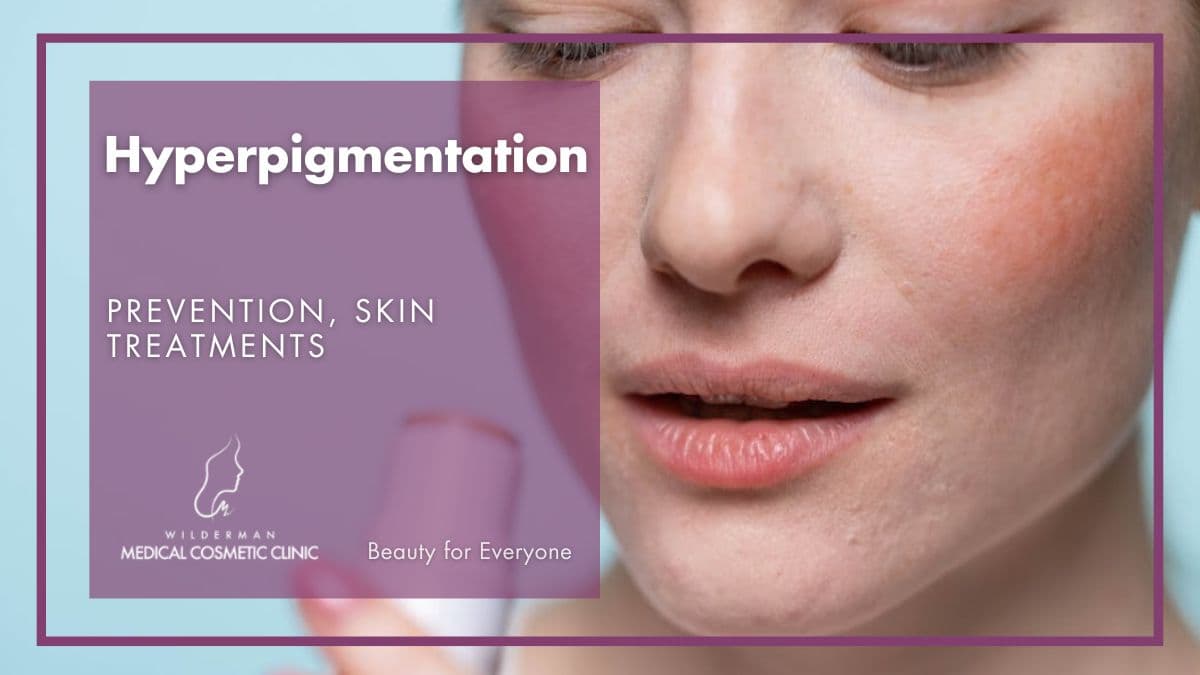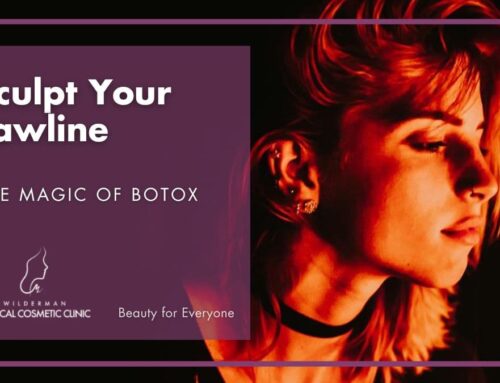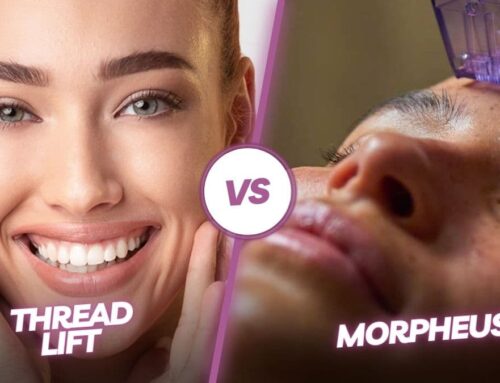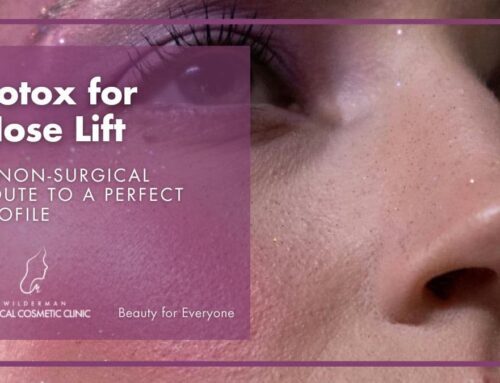Hyperpigmentation
Prevention, Skin Treatments
Even skin pigmentation is something everyone wants. However, the added challenge of hiding skin conditions like hyperpigmentation can ruin your plans for the perfect look.
Covering dark patches of skin is possible with makeup products like concealer. However, this coverage is temporary and many people wonder how they can have long-lasting, beautiful, and evenly toned skin.

What is Hyperpigmentation?
Hyperpigmentation, also known as age spots or sun spots, occurs when an area of your skin turns darker than its surrounding area. According to the American Osteopathic College of Dermatology, this condition affects every skin color and is a result of excess melanin deposits in the skin.
Who does it affect?
Hyperpigmentation can affect anyone since this skin condition does not target a specific age or race. However, those who spend more time in the sun have a higher chance of developing darker skin patches.
Hyperpigmentation has a tendency to appear after you’ve spent time in the sun.
The Mayo Clinic explains that the production of melanin, which is the pigment that gives color to human skin, eyes, and hair, is elevated with exposure to ultraviolet (UV) light.
How can you prevent hyperpigmentation?
Hyperpigmentation can be avoided by staying out of the sun during peak hours. When the sun’s rays are at their strongest it’s best to cover sensitive body parts with clothing to avoid damage. Areas like your shoulders and your face will benefit from being in the shade.
Here are some ways to help lessen its appearance.
Hyperpigmentation treatment options
Hyperpigmentation refers to the darkening of patches of skin caused by an excess of melanin, the pigment that gives color to the skin. Here is a comprehensive list of different treatment methods for hyperpigmentation:
Topical creams and lotions
Topical creams and lotions are a common and convenient treatment option for hyperpigmentation. They are applied directly to the affected areas of the skin and can help lighten dark spots, even out skin tone, and inhibit melanin production. Here are some commonly used topical creams and lotions for hyperpigmentation:
- Hydroquinone: It is a widely used topical ingredient that inhibits an enzyme called tyrosinase, which is involved in melanin production. Hydroquinone is available in various strengths and is often used in combination with other ingredients.
- Retinoids: Derived from vitamin A, retinoids promote cell turnover, exfoliation, and the growth of new skin cells. They can help fade hyperpigmentation and improve overall skin texture.
- Corticosteroids: Topical corticosteroids can help reduce inflammation and lighten dark spots. They are sometimes used in combination with other lightening agents to enhance their effects.
- Kojic acid: Kojic acid is derived from fungi and inhibits tyrosinase activity, reducing melanin production. It is often used in skincare products for its skin-lightening properties.
- Azelaic acid: Azelaic acid has both exfoliating and melanin-inhibiting properties. It can help fade hyperpigmentation and is particularly useful for conditions like melasma.
- Vitamin C (ascorbic acid): Vitamin C is known for its antioxidant properties and its ability to brighten the skin. It can help reduce the appearance of hyperpigmentation and promote a more even skin tone.
These topical creams and lotions are available over the counter or with a prescription, depending on their strength and formulation
Chemical peels
Chemical peels are a popular treatment option for hyperpigmentation. They involve the application of a chemical solution to the skin, which causes controlled exfoliation and removal of the outer layers.
This process stimulates cell turnover, promotes the growth of new, evenly-pigmented skin, and can help reduce the appearance of hyperpigmentation. Here are some types of chemical peels commonly used:
- Glycolic acid peels: Glycolic acid is an alpha-hydroxy acid (AHA) derived from sugar cane. It is a mild peel that exfoliates the top layer of skin, revealing a fresher, brighter complexion. Glycolic acid peels are often used for mild hyperpigmentation and can be performed in various strengths.
- Trichloroacetic acid (TCA) peels: TCA is a medium-depth chemical peel penetrating deeper into the skin than glycolic acid. It can effectively treat moderate hyperpigmentation and improve skin texture. TCA peels require more downtime and may cause temporary redness and peeling.
- Salicylic acid peels: Salicylic acid is a beta-hydroxy acid (BHA) penetrating oil glands and is particularly beneficial for treating acne-related hyperpigmentation. Salicylic acid peels can help exfoliate the skin, unclog pores, and reduce pigmentation.
- Jessner’s peel: Jessner’s peel is a combination peel that typically consists of resorcinol, salicylic acid, and lactic acid. This peel can target different layers of the skin, promoting exfoliation and cell renewal. It is often used for more severe hyperpigmentation or in combination with other treatments.
The strength and depth of the chemical peel will depend on the specific concerns and goals of the individual.
Microdermabrasion
Microdermabrasion is a non-invasive cosmetic procedure that involves the exfoliation of the outer layer of skin using a specialized device. It is commonly used to improve skin texture and reduce the appearance of fine lines, acne scars, and hyperpigmentation. Here’s more information about microdermabrasion and its role in treating hyperpigmentation:
Procedure: During a microdermabrasion treatment, a handheld device with a tip covered in fine crystals or a diamond-tipped wand is used to gently exfoliate the skin’s surface. The device simultaneously suctions away the dead skin cells and uses crystals, promoting cell turnover and stimulating collagen production.
Mechanism of action: By removing the outer layer of skin, microdermabrasion helps to diminish hyperpigmentation. It exfoliates the pigmented cells, allowing new, healthier skin cells to come to the surface. Over time, this can result in a more even skin tone and a reduction in the appearance of dark spots.
Benefits for hyperpigmentation: Microdermabrasion can be effective in treating mild to moderate cases of hyperpigmentation. It is particularly useful for addressing superficial pigmentation issues, such as sunspots, age spots, and uneven skin tone caused by sun damage. However, it may be less effective for deeper pigmentation concerns, such as melasma.
Number of sessions: Multiple sessions of microdermabrasion are usually recommended to achieve noticeable results. The exact number of treatments will depend on the individual’s skin condition, the severity of hyperpigmentation, and the desired outcome. Sessions are typically scheduled a few weeks apart to allow the skin to heal between treatments.
Recovery and side effects: Microdermabrasion is considered a gentle procedure with minimal downtime. The treated skin may appear slightly pink or feel mildly sensitive immediately after the session, but this usually subsides within a day or two. It is important to protect the skin from sun exposure and follow any post-treatment instructions provided by the skincare professional.
It’s important to note that microdermabrasion may not be suitable for everyone, particularly those with active acne, rosacea, eczema, or sensitive skin.
Laser therapy
Laser therapy is a popular and effective treatment option for hyperpigmentation. It utilizes laser technology to target and break down excessive melanin in the skin, leading to a reduction in pigmentation and the promotion of a more even skin tone.
Here’s a closer look at laser therapy for hyperpigmentation:
- Procedure: Laser therapy involves the use of a focused beam of light that emits specific wavelengths. The laser energy is absorbed by the melanin pigment in the skin, causing it to fragment and disperse. This process helps to fade dark spots and pigmented areas, promoting a more uniform complexion.
- Types of lasers: There are different types of lasers used for treating hyperpigmentation, including:
- Fractional laser resurfacing: Fractional lasers create microscopic treatment zones on the skin, leaving surrounding areas untouched. This promotes faster healing and minimizes downtime. Fractional lasers can be ablative (removing outer layers of skin) or non-ablative (stimulating collagen production without removing skin layers). They are effective for treating more severe hyperpigmentation, including melasma and post-inflammatory hyperpigmentation.
- Broadband Light (BBL): BBL is not technically a laser; instead, it’s a form of light therapy. While lasers use a single, specific wavelength of light, BBL devices use a broad spectrum of light with various wavelengths. BBL is often discussed alongside lasers because they share similarities in their application and are used for similar aesthetic purposes, including the treatment of hyperpigmentation, sun damage, and vascular lesions. Both technologies work by targeting specific chromophores in the skin, such as melanin or hemoglobin, to achieve the desired therapeutic effect. Lasers are often preferred for specific, targeted treatments, while BBL is versatile and can address a broader range of skin concerns.
- Benefits and considerations: Laser therapy for hyperpigmentation offers several advantages:
- Precision: Laser technology allows for precise targeting of pigmented areas, minimizing damage to surrounding skin.
- Customization: The settings and parameters of laser devices can be adjusted to suit individual skin types, pigmentation concerns, and treatment goals.
- Versatility: Laser therapy can be used on various body areas affected by hyperpigmentation, including the face, neck, chest, and hands.
- Potential for long-lasting results: Laser treatments can provide long-term reduction in hyperpigmentation when combined with proper sun protection and skincare.
However, there are some considerations with laser therapy:
- Downtime: Depending on the type and intensity of the laser used, there may be a period of redness, swelling, and peeling following the treatment. This downtime can range from a few days to a couple of weeks.
- Multiple sessions: Multiple laser sessions are often required to achieve optimal results. The number of treatments depends on the severity of hyperpigmentation and the individual’s response to the treatment.
- Post-treatment care: It is crucial to follow post-treatment instructions provided by the healthcare professional, which may include avoiding sun exposure, wearing sunscreen, and using appropriate skincare products.
Microneedling
Microneedling is a cosmetic procedure that involves creating tiny punctures in the skin using fine needles. Also known as collagen induction therapy, it stimulates the production of collagen and elastin, which can help improve skin texture and reduce hyperpigmentation. Let’s explore microneedling and its role in treating hyperpigmentation:
Procedure: During a microneedling session, a handheld device equipped with multiple tiny needles is gently rolled or pressed onto the skin’s surface. The needles create microscopic punctures, known as microchannels, without causing significant damage to the epidermis. These microchannels trigger the skin’s natural healing process and encourage the production of new collagen and elastin fibers.
Mechanism of action: Microneedling helps address hyperpigmentation by promoting skin rejuvenation and increasing cell turnover. The controlled injury caused by the microneedles stimulates the skin to repair itself, leading to the formation of new, healthier skin cells. This process can result in the reduction of hyperpigmentation and the improvement of overall skin tone and texture.
Benefits for hyperpigmentation: Microneedling can be effective for various types of hyperpigmentation, including sunspots, post-inflammatory hyperpigmentation, and melasma. By stimulating collagen production and promoting cell turnover, microneedling can help fade dark spots and even out the skin tone over time. It can also enhance the penetration and efficacy of topical treatments applied during or after the procedure.
Number of sessions: The number of microneedling sessions needed depends on the severity of hyperpigmentation and individual response to the treatment. Typically, a series of several sessions spaced a few weeks apart is recommended to achieve noticeable results. However, the exact treatment plan should be determined by a skincare professional based on the specific needs of each individual.
Recovery and side effects: After microneedling, the treated skin may appear red and mildly inflamed for a day or two. Some individuals may experience slight skin sensitivity, dryness, or flakiness. However, these effects are temporary and usually resolve within a few days. It is important to follow post-treatment instructions, including gentle skincare, sun protection, and avoiding harsh products or activities that could irritate the treated area.
Cryosurgery
Cryosurgery, also known as cryotherapy, is a medical procedure that involves the use of extreme cold temperatures to destroy or remove abnormal tissues, including areas of hyperpigmentation. Let’s delve into the details of cryosurgery and its role in treating hyperpigmentation:
- Procedure: During cryosurgery, a cryogen, typically liquid nitrogen or another freezing agent, is applied directly to the affected area using a cryosurgical probe or spray. The cold temperature rapidly freezes the skin and causes localized damage to the hyperpigmented cells.
- Mechanism of action: The extremely cold temperature destroys the excess melanocytes (pigment-producing cells) responsible for hyperpigmentation. As the damaged cells are eliminated, new and healthier skin cells gradually replace them, leading to a more even skin tone.
- Benefits for hyperpigmentation: Cryosurgery is commonly used to treat various forms of hyperpigmentation, including solar lentigines (sunspots), seborrheic keratoses, and certain types of pigmented birthmarks. It can effectively lighten or remove these pigmented lesions, resulting in a more uniform complexion.
- Number of sessions: The number of cryosurgery sessions required depends on the size and depth of the hyperpigmented lesions, as well as individual response to the treatment. In some cases, a single session may be sufficient to achieve the desired results. However, for larger or more stubborn areas of hyperpigmentation, multiple sessions may be necessary.
- Recovery and side effects: After cryosurgery, the treated area may develop redness, swelling, blistering, or crusting. These are normal reactions and typically resolve within a few weeks. It is important to protect the treated area from sun exposure and follow post-treatment care instructions provided by the healthcare professional.
Dermabrasion
Dermabrasion is a cosmetic procedure that involves the controlled removal of the outer layers of skin using a rotating device with a rough surface. This mechanical exfoliation process helps improve skin texture, reduce hyperpigmentation, and address various skin concerns. Here’s a closer look at dermabrasion and its role in treating hyperpigmentation:
Procedure: During dermabrasion, the skin is numbed with a local anesthetic, and a high-speed rotating instrument, such as a wire brush or diamond wheel, is used to gently abrade the outer layers of the skin. The depth of abrasion can be adjusted based on the individual’s needs and the severity of hyperpigmentation.
Mechanism of action: Dermabrasion works by removing the damaged or hyperpigmented skin layers, allowing new and healthier skin to regenerate. By stimulating cell turnover and promoting the growth of fresh skin cells, dermabrasion can help improve skin tone and reduce the appearance of hyperpigmentation.
Benefits for hyperpigmentation: Dermabrasion is commonly used to address a range of hyperpigmentation concerns, including post-inflammatory hyperpigmentation, sunspots, and uneven skin tone. By exfoliating the skin and removing the superficial layers, dermabrasion can fade dark spots and promote a more uniform complexion.
Number of sessions: The number of dermabrasion sessions required depends on the severity of hyperpigmentation and individual response to the treatment. In most cases, a series of several sessions spaced a few weeks apart is recommended to achieve noticeable results. However, the treatment plan should be customized to each individual’s specific needs.
Recovery and side effects: After dermabrasion, the treated skin will be raw, red, and sensitive. It is important to follow proper post-treatment care instructions provided by the healthcare professional. The skin will gradually heal over a period of several weeks, during which it may appear pink or slightly discolored. Sun protection and gentle skincare are crucial during the recovery phase.
Prescription medications
For specific types of hyperpigmentation, dermatologists may prescribe medications. Oral tranexamic acid, a medication used to control bleeding, has been found to help reduce hyperpigmentation, particularly in cases of melasma. Topical corticosteroids can be prescribed to reduce inflammation and lighten dark spots.
Chemical spot treatments
Chemical spot treatments are topical products that target and lighten hyperpigmented spots. They contain ingredients like hydroquinone, AHAs, BHA, azelaic acid, and retinoids. These treatments exfoliate the skin, reduce melanin production, and promote new cell growth. It is started with a patch test and gradually frequency is increased.
Skin lightening creams with botanical extracts
Skin-lightening creams with botanical extracts are formulated with natural plant-based ingredients to lighten hyperpigmentation and even out skin tone. They contain extracts like licorice root, bearberry, kojic acid, mulberry, arbutin, vitamin C, niacinamide, and green tea.
These extracts work by inhibiting melanin production, promoting collagen, and providing antioxidant benefits. The creams can fade various types of hyperpigmentation, should be applied as directed, and can be used in combination with other treatments.
Combination therapies
Combination therapies refer to the use of multiple treatment modalities or approaches simultaneously or sequentially to address hyperpigmentation. Combining different therapies can provide synergistic benefits, enhance treatment outcomes, and target multiple aspects of hyperpigmentation. Here are some common combination therapies used for hyperpigmentation:
Topical creams and treatments: Combining different topical creams or treatments with complementary ingredients can optimize their effects. For example, combining a skin-lightening cream with botanical extracts with a retinoid cream can target both melanin production and skin cell turnover for improved results.
Chemical peels and laser therapy: Chemical peels and laser therapy can be used together to address hyperpigmentation. Chemical peels exfoliate the skin, while laser therapy targets deeper layers to break up pigmentation. This combination can provide comprehensive treatment for different types of hyperpigmentation and achieve more significant results.
Microneedling and topical serums: Microneedling creates microchannels in the skin, enhancing the absorption of topical serums. Combining microneedling with serums containing skin-lightening ingredients like vitamin C or tranexamic acid can improve the penetration of the active ingredients and enhance their efficacy.
Cryosurgery and spot treatments: Cryosurgery, which uses extreme cold to destroy abnormal skin cells, can be combined with chemical spot treatments for targeted treatment of specific hyperpigmented spots. Cryosurgery can remove stubborn dark spots, and spot treatments can further lighten the remaining hyperpigmentation.
Oral supplements and topical treatments: Some individuals may benefit from combining oral supplements with topical treatments. For example, taking oral antioxidants like vitamin C or glutathione alongside topical creams can provide internal and external support for skin health and help reduce hyperpigmentation.
It’s important to note that the specific combination therapies used will depend on the individual’s unique skin condition, the severity of hyperpigmentation, and the recommendations of a dermatologist or skincare professional.
Sunscreen and sun protection
Exposure to UV radiation can trigger and worsen hyperpigmentation. UV rays stimulate melanocytes, the cells responsible for producing melanin, leading to increased melanin production and darkening of existing spots. By consistently using sunscreen and practicing sun protection measures, you can minimize UV-induced damage, help prevent the worsening of hyperpigmentation, and maintain the results of other treatment methods.
Remember, sunscreen and sun protection should be practiced year-round, even on cloudy or overcast days, as UV rays can still penetrate through the clouds and cause damage to the skin. It is recommended to consult with a dermatologist or skincare professional to choose a suitable sunscreen and develop a comprehensive sun protection plan based on your specific needs and skin type.
Conclusion
In conclusion, hyperpigmentation is a common skin condition characterized by the darkening of certain areas of the skin. While it may not be a serious medical concern, it can affect one’s self-esteem and confidence. Fortunately, there are various treatment options available to help reduce or eliminate hyperpigmentation.
The treatment options for hyperpigmentation include topical creams and lotions, chemical peels, microdermabrasion, laser therapy, microneedling, cryosurgery, dermabrasion, skin lightening creams with botanical extracts, chemical spot treatments, and combination therapies. Each treatment method works through different mechanisms to address hyperpigmentation and improve skin tone.
It’s important to note that the effectiveness of each treatment may vary depending on the type and severity of hyperpigmentation, as well as individual factors. Therefore, consulting with a dermatologist or skincare professional is recommended to determine the most suitable treatment plan for your specific needs.
In addition to treatment, incorporating sun protection measures is crucial in managing hyperpigmentation. Sunscreen with broad-spectrum protection and a high SPF should be used daily, along with seeking shade, wearing protective clothing, and avoiding tanning beds. Sun protection helps prevent further darkening of existing spots and reduces the risk of new hyperpigmentation formation.
Remember, patience and consistency are key when it comes to treating hyperpigmentation. Results may take time to appear, and it’s important to follow the recommended treatment regimen and maintain a healthy skincare routine. With the right approach and professional guidance, it is possible to achieve a more even and radiant complexion.
References
Nautiyal, A, Wairkar, S. Management of hyperpigmentation: Current treatments and emerging therapies. Pigment Cell Melanoma Res. 2021; 34: 1000– 1014. https://doi.org/10.1111/pcmr.12986
Desai SR. Hyperpigmentation therapy: a review. J Clin Aesthet Dermatol. 2014 Aug;7(8):13-7. PMID: 25161755; PMCID: PMC4142815.
Healthline. Hyperpigmentation Treatment: Options, Causes, and More. Retrieved from https://www.healthline.com/health/beauty-skin-care/hyperpigmentation-treatment. Accessed on May 23, 2023.
Stay Ahead of the Beauty Curve
Beyond Beauty: Elevate Your Routine with Insider Tips and Breakthroughs – Subscribe Now!
Transform your beauty routine into something extraordinary!





